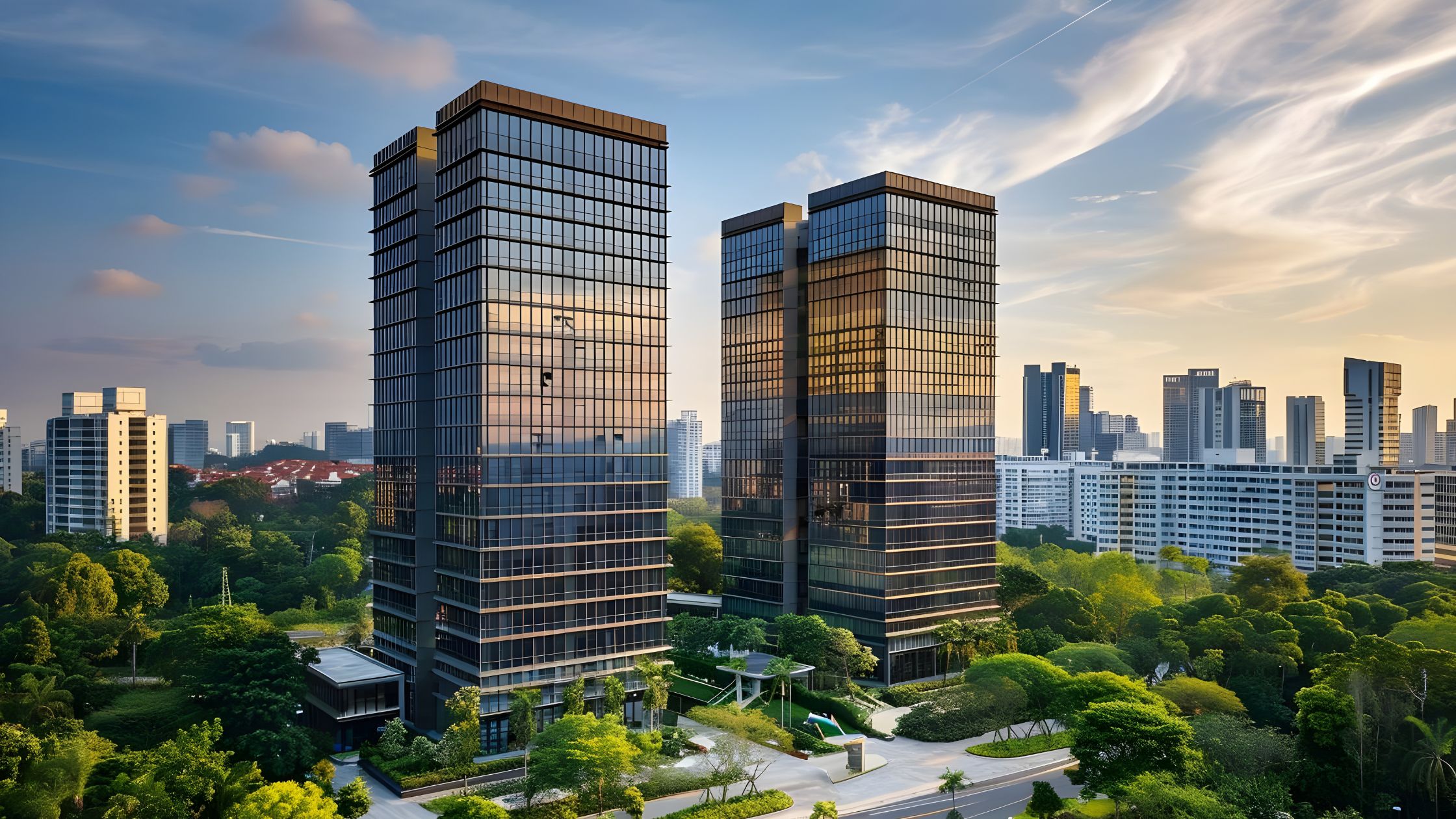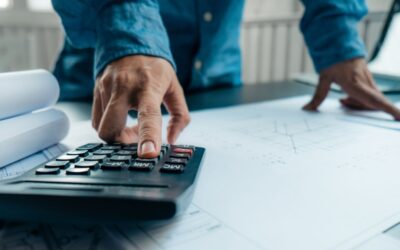If you’re looking to buy a distressed commercial property with plans to renovate it and stabilize it through lease-up or resale, one figure you need to understand is ARV, or after repair value for real estate investors.
This metric helps you evaluate whether the returns you might potentially extract through refinance or sale justify the cost of acquiring it, rehabbing it, and carrying debt and operating expenses.
ARV real estate is also important if you are thinking of refinancing, because lenders often look at this number to decide if the property’s improved value supports a new loan large enough to pay off the original hard money loan, cover repair costs, and handle any holding expenses.
What is ARV in commercial real estate?
Your property’s ARV is its projected value after all the repairs, renovations, or upgrades you’ve planned are complete and the asset is repositioned for sale or refinance.
The concept of ARV in real estate looks like this when simplified:
ARV = Purchase Price + Renovation Value
This metric is especially useful when you’re buying underperforming or distressed assets.
It gives you a clear estimate of what the property could be worth once it’s fully improved—helping you decide if it’s worth the risk.
How do you calculate ARV for refinancing?
To calculate ARV for refinancing purposes, take the total cost of the project — including purchase price, renovation budget, and holding costs — and divide that sum by 0.75.
This calculation helps you estimate the minimum value that the property must reach after repairs to make the project financially viable under most refinancing scenarios.
Example of how to compute ARV in commercial real estate
Say you purchase a commercial property for $5,000,000, spend $2,000,000 on improvements, and accrue $200,000 in holding costs (including property taxes and insurance premiums, among others).
Add this all up and your total project investment comes to $7.2 million.
If your lender uses a 75% loan-to-value (LTV) ratio, they’ll only refinance up to 75% of the property’s after-repair value. So to ensure that the refinance loan covers your entire investment, you need the property’s ARV to be at least:
$7,200,000 ÷ 0.75 = $9,600,000
The minimum ARV required isn’t derived from your costs directly — it’s what the lender needs to see in the final property value to justify lending you $7.2 million. The loan is capped at 75% of ARV, not based on how much you’ve spent.
If the appraised value after renovations falls short of that $9.6 million mark, you won’t be able to refinance for the full amount you invested.
How do you estimate your commercial property’s after-repair value?
After repair value for real estate investors is always an estimate because there’s no way to know exactly what a commercial property will appraise for once renovations are done.
But that doesn’t mean you’re just ‘guessing.’ It’s certainly possible to come up with an ARV figure that’s well-supported by detailed market research and comparisons.
Use sales comps to ground your estimate
You can start by looking at sales in the area from the last three to six months. Be sure to look at commercial properties that are similar to yours in terms of size, condition, use, and location.
Once you’ve gathered three to four solid comps, compare them point by point with your property. Does your building lack amenities others have, like a pool, parking garage, or newer HVAC? Is your property older or on a less desirable street?
Each difference can push your ARV up or down.
Remember that just because you’ve added features or upgrades doesn’t mean that your building will match the value of a newer asset.
Even a fully renovated apartment complex from the 1970s won’t necessarily command the same price as a newly constructed building.
Of course, nuance is important —it’s not enough to tally up renovation costs or compare square footage. You’ll also need to account for age, location, condition, curb appeal, and features, and each one can influence the final appraisal.
Watch the market closely
Is rent growth accelerating, and are vacancies shrinking? Then you might justifiably project a higher ARV. On the other hand, if rent increases are flattening and transaction volume is slowing (perhaps due to rising interest rates), you’ll want to dial your estimate down.
The markets can change dramatically between the time you acquire a property and the time you refinance it, so building your ARV projection on outdated or overly optimistic trends can sink the deal fast.
To avoid getting blindsided, stay current on local comps, cap rate shifts, and financing conditions, and when in doubt, use the more conservative estimate.
Are there risks to relying on ARV?
The biggest risk with ARV is getting the number wrong — either overestimating or underestimating it.
If you overestimate your CRE’s after-repair value, you may end up with a property that won’t appraise high enough to support a full refinance. That means you could get stuck with a loan balance that exceeds what the lender is willing to fund — and you’ll have to bring in cash to cover that difference.
On the flip side, underestimating your ARV can hurt you, too. If you project too conservatively, you might leave financing on the table and fall short of the capital you need to complete the project.
Estimating ARV is tricky because it depends on many moving parts: the property’s final condition, local market comps, buyer demand, and broader market trends.
These aren’t always easy to pin down, especially if the rehab takes months and the market changes fundamentally in the meantime.
And that’s exactly why due diligence — in the form of speaking with commercial brokers who understand the submarket — is 100% important.
ARV isn’t a perfect science, but the more research you do, the more confident you can be in your numbers.
How is ARV in real estate related to the 70% rule?
The 70% rule in real estate is a general guideline that helps investors decide how much they should pay for a distressed commercial property while leaving room for profit.
It links the property’s projected ARV with the cost of renovations to give a quick estimate of the maximum purchase price that still makes financial sense.
Here’s the basic process:
ARV = Purchase Price + Renovation Value
Then, apply the rule:
Maximum Purchase Price = (ARV × 0.70) – Repair Costs
Say you’re eyeing a warehouse with a projected ARV of $3,500,000 and repair costs of $500,000. According to the 70% rule:
($3,500,000 × 0.70) – $500,000 = $1,950,000
That means you shouldn’t pay more than $1.95 million if you want to protect your profit margin.
This formula gives you a simple way to assess whether a deal leaves enough cushion after repairs, and it’s very useful in competitive bidding scenarios or when you need to quickly evaluate multiple deals.
Why experienced investors don’t always stick to 70%?
But, while the 70% rule works well as a screening tool, it doesn’t always fit the realities of commercial real estate.
- On larger assets like office buildings or multifamily complexes, sellers are unlikely to accept deeply discounted offers, even if major rehab is needed. Strictly following the 70% cutoff will often price you out before negotiations can even begin.
- Commercial renovations are much more complex than just patching walls or updating interiors. You might need structural engineering combined with ADA compliance upgrades and specialty systems like fire suppression. A one-line repair estimate won’t cover all that.
- The math you run today may not hold six months from now. Do you plan to flip a property over 12 to 18 months? Cap rates, rental demand, and financing costs can all change in that time, affecting your final sale price or refinance terms.
- Are you buying with the intention to hold and rent? Cash flow and valuation in these cases rely on net operating income and the property’s debt coverage, not just ARV. The 70% rule doesn’t capture this.
Experienced CRE investors often build custom models based on the specifics of the deal instead of relying on a fixed percentage.
- Rather than ballparking a single repair estimate, it might be better to create a full budget that includes financing fees, inspections, permits, soft costs, holding costs, and a contingency reserve for surprises.
- Instead of letting a percentage define your margin, decide how much return you want in absolute terms. That could be a dollar amount or a percentage based on the total project budget. Work backwards from that to calculate your maximum bid.
Do you need help running the ARV numbers on your next CRE rehab project?
Private Capital Investors works with investors across the country to finance value-add deals quickly.
Our solutions include hard money, bridge loans, and stated income loans, and we can also tailor a financing deal to meet your specific needs.
Contact our team to explore loan options tailored to your ARV and exit strategy.
Sources





